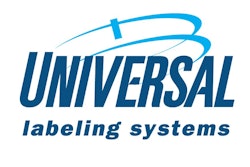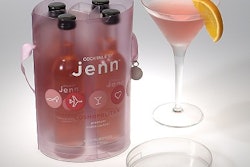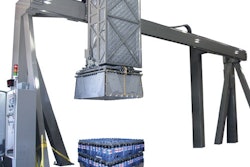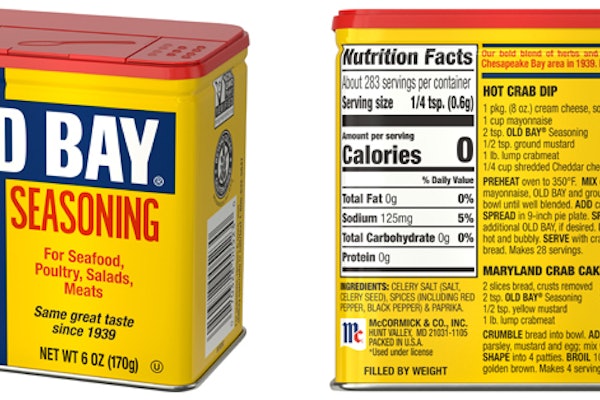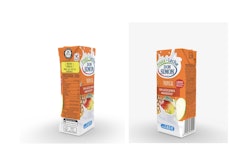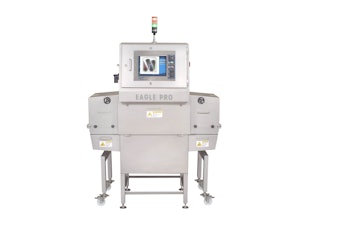Packaging today must answer increasingly sophisticated retailer needs and satisfy the consumer throughout the product’s life cycle—while still managing somehow to take cost out of the system.
Packaging experts contacted by Packaging World agree that packaging strategies aimed at answering these three challenges should guide product packagers heading into 2006. They believe these challenges will profoundly influence strategies for creating packages with the best marketing impact in the coming year and beyond.
PW asked our experts—drawn from packaged goods companies, a design consultancy, and academia—to assess how current trends will affect the “front end” of the packaging value chain, where decisions on the look and structure of the package are made. The feedback we received offers a diverse range of perspectives on factors, from in-store marketing tactics to outsourcing, that can affect package creativity.
Designs will emphasize value
All our experts expect to see an increase in packaging with strong aesthetics that motivate retailers to carry the product in their stores and also present consumers a reason to justify their purchase decision. The key measuring stick for any package design will be value, as packaging will have to work harder to gain space and attention on increasingly crowded store shelves.
“Packaging will become even more integrated with the product in function, branding, and merchandising,” says Duane McDonald at Kimberly-Clark Corp. “It has to do its part in delivering the brand promise to consumers. Graphics and aesthetics will be more important.”
Boston Beer Co.’s Robert Henry Hall describes this brand promise as “an emotional benefit of style. The design makes the consumer feel a certain way through the product and package use.”
But Hall also foresees a trend toward packages having improved ergonomics. Consumers favor, for example, hand-friendly package shapes and textures, such as those for sports beverage bottles, that allow them to “multitask.”
Beyond pleasing aesthetics, designs that remove complexity from consumers’ lives and help them save time should be a cornerstone in any well-thought-out packaging program. This observation comes from Unilever’s Sharon Reiter Lindberg. Packaging communication that simplifies product selection can help increase sales, Lindberg says.
“A very prevalent packaging and marketing strategy that I see reaching the top of its developmental peak is the over-saturation of product segmentation in a particular product category,” Lindberg adds.
In Melinda Wooten’s view at E&J Gallo Winery, the need for speed will accelerate not only at the store shelf, but also in the supply chain. Wooten sees enormous potential for 3-D package graphics that are tested online. But she stresses that the cost needs to come down.
“Online testing, in general, is quicker to field,” Wooten says. “Using 3-D graphics allows consumers to read side and back panels, as well as to explore how a package opens or works. However, the cost of creating prototypes to be used in more traditional mall or central location research is often less than the cost of creating 3-D prototypes.”
The regional marketer’s view
As a regional marketer with tight budgets, Nashville, TN-based Vietti Foods Co. seeks packaging efficiencies that take costs out of the system. But Vietti Foods’ Philip Connelly says that marketers at any consumer goods companies who are sensitive to the entire range of package development factors that affect the bottom line can deliver more than just what the consumer needs. They can also give retailers more stocking flexibility on their crowded shelves and reduce distribution costs.
“Continued proliferation of new items will prompt retailers to seek packaging that more effectively utilizes limited shelf space,” Connelly observes. “Sharply rising transportation costs are forcing manufacturers to seek more efficient use of space inside and outside the package to reduce per-unit freight costs.”
As an educator in Michigan State University’s School of Packaging, Laura Bix often hears consumer concerns about packaging. Bix maintains that consumer goods companies as a whole need to focus attention on creating package designs that work for older consumers. She cites U.S. Bureau of the Census figures showing that 18% of the population in the United States will be age 65 or older in 2025, compared with 13% in 1998, and the influx of older consumers is about to include the beginning of the massive baby boom generation.
This aging consumer segment’s need for packaging that addresses impaired visual and motor skills is fast becoming more urgent, Bix says.
“Unlike previous generations, those in the aging population are an empowered group that will make demands of manufacturers,” Bix notes. “This is the generation that protested Vietnam, advocated for equal rights, and lobbied for the resignation of a president. They are not afraid to express themselves.”
Packaging in an integrated mix
Connelly echoes an observation from Jerome Kathman, who heads LPK (Libby Perszyk Kathman), a package design agency. Both Connelly and Kathman believe that marketers on the whole will need to communicate with consumers more effectively by integrating advertising campaigns with the right packaging and other elements in the marketing mix. Too often, they say, these components are working independently of each other.
Unilever’s Lindberg underscores this point by adding, “While it is usually the advertising that drives brand essence home to the consumer, it is the brand image on shelf—the package—that is often the first, the most immediate, and the most important impression left with the consumer about that brand and that product. The package must be a true reflection of the brand’s personality, living right at home with the consumer.”
Smaller, regional marketers have to be especially adept at maximizing the impact of every marketing dollar they spend. Vietti Foods’ approach leverages the impact of the label, and it may provide one blueprint for future regional marketing campaigns.
Irreverent commemorative labels on bean cans in the Vietti family of products show caricatures of a donkey and an elephant playfully exchanging political barbs. The short-run labels transformed cans of Liberal Democrat Boston Baked Beans and Conservative Republican Texas Chili Beans into collectors’ items and spiked sales of these two products during a recent election.
“We are attempting to improve returns on fixed packaging costs by designing labels that prompt consumer interaction via cross-marketing, co-branding, and a link to common interests on every package,” Connelly says.
On the other hand, Wooten cautions that marketers in general shouldn’t rely on packaging to pull too much of the marketing load with overly complex communication. The current trend is moving rapidly toward simpler designs.
“A package should communicate just two or three things beyond the basic branding information,” Wooten says. “Someone should raise the issue of the package being overburdened if the design brief contains more than that.”
Deeper insights provide opportunities
Thought leaders we’ve spoken to believe that opportunities are at hand for packaging to further influence sales, but they aren’t on enough marketers’ radar screens yet. A world of potential can open up by soliciting deeper consumer insights and channeling them into both brand development and package design, Kathman says.
He sees a correlation between products that sell and the brand owner’s depth and breadth of knowledge through regular interaction with consumers who buy and use those products. He warns that consumer packaged goods (CPG) companies that fail to take the extra step of knowing their consumer more intimately will find their brands at a serious competitive disadvantage in 2006 and beyond.
Some marketers are already operating behind the curve in this regard. A Shelf Impact! survey of 206 readers conducted in August 2005 found that 16% of the respondents—CPG companies, design firms, and suppliers—observe or talk to consumers less than once a year about their packaging preferences. And 15% of respondents said they never talk to consumers.
The most effective research techniques are extending beyond focus groups, creating interaction with consumers in stores and in their homes—the environment in which they shop for and use the products that they buy. Wooten explains that ethnographic research is one technique that E&J Gallo Winery is embracing. Ethnography enables the winery’s cross-functional teams to create more functional and engaging packaging by basing design in part on consumer observation—gaining insights often unattainable in structured focus groups. Ethnography also alerts package-development teams to new ways in which consumers think about and use products, Wooten points out.
“Better understanding of both shopper habits and consumer needs and wants is replacing tired ideas based on traditional demographic segmentation,” Kathman adds.
Kimberly-Clark’s McDonald agrees. “Consumer trends will always show us the opportunities,” he says. “We need to keep our eyes open.”
One of these opportunities, Lindberg predicts, will be more aesthetically pleasing, refillable packaging that reduces packaging waste in food, household, and personal care products. “Creative thinking in innovative package design and merchandising of the future needs to and will center around these environmental concerns,” Lindberg says.
Green marketing will be important in winning Generation X—consumers born between 1965 and 1975—as they enter their peak earning years, Connelly adds. “Unlike retiring boomers, Generation X was raised with an awareness of the need to address limited resources,” Connelly says.
On the other hand, Hall maintains that any packaging project has to pass the same requirements, regardless of design origins or objectives. He says the package-development team needs to ground a packaging project in the right research and metrics to justify what senior managers—who may lack a packaging background—may view as merely intangible benefits of packaging changes.
Several of the packaging experts we interviewed cited research showing that consumers are willing to pay more for innovative packaging with demonstrable extra value, providing a catalyst for innovation. But MSU’s Bix questions whether package-development teams will respond by improving on the status quo. “My fear is that companies will continue to give the same old excuses when it comes to packaging,” she says. “Things like, ‘It can’t be that bad, that is the package that all of the competition uses.’”
Outsourcing will increase
Contract packaging is another area of opportunity that should be on the radar screen for any product marketer who wants to operate ahead of the curve. The contract packaging industry is growing by 15-20% annually, fueled not only by regional and virtual marketers but also by some of the national’s largest consumer packaged goods companies. Here are some factors driving the growth:
• A new “core competency” thinking is emerging as CPG companies reduce or abandon inefficient manufacturing operations internally and shift package production to service providers. A new genre of contract packagers is sourcing the packaging materials, designing and filling the package, and then getting it into distribution. In the process, CPG companies are focusing on what they do best: creating and marketing products.
• Individual retailers are realizing the need to make their stores the “brand” through tactics such as the “treasure hunt” philosophy, in which the product mix inside the store changes frequently.
• Retail channels are becoming more segmented.
• Product life cycles are becoming shorter.
• Test-marketing small quantities of a new product via a contract packager is becoming an economical alternative to taking on the risks inherent in a CPG company investing capital in its own production lines and facilities to produce a product that may ultimately fail.
Connelly also believes contract packaging will rise as a viable option as consolidation of smaller and regional co-packers increases volumes and scale economies of the remaining service providers. “Those remaining suppliers will be able to invest in emerging technologies, solidifying their positions as low-cost producers,” Connelly says.
Lindberg believes that in the best scenario, contract packagers will integrate themselves seamlessly as the “production department” inside CPG companies and inspire innovation.
At Unilever, Lindberg says, “Some of the newest, most innovative launches may indeed be beyond the scope of our current manufacturing operations, therefore, necessitating creative use of contract packaging.”
As mergers and acquisitions continue to reshape CPG companies, Wooten sees a practical benefit to bringing in outsourced help for increasingly smaller and stretched marketing and design departments. “Outside designers bring new energy and thinking to projects,” she says.
However, while CPGs can reduce their risk in opting for a contract packager, Hall cautions that they may sacrifice speed to market in the process if they fail to do adequate due diligence and align themselves with the wrong co-packer for their needs.
From a marketing perspective, managing a successful packaged brand today requires close examination of more variables than just monitoring and reacting to competitors. Heading into 2006, it’s clear that any contemporary packaging strategy also requires deeper insights into why consumers buy products and how they use packaging through its life cycle. Brand stewards also need to understand fast-changing retail channel dynamics and to investigate the marketing benefits that are possible when a CPG company focuses on its core competencies and outsources non-core operations.
See sidebar to this article: The experts





